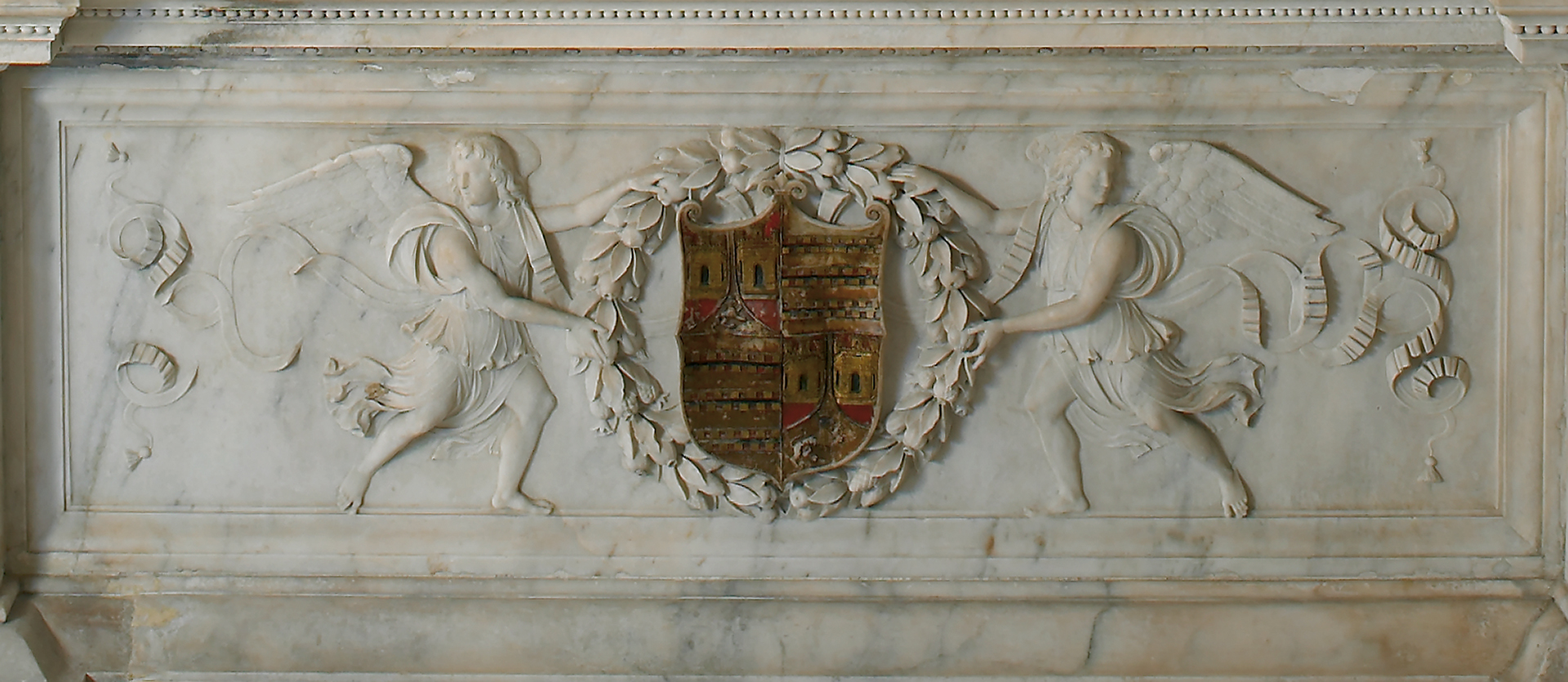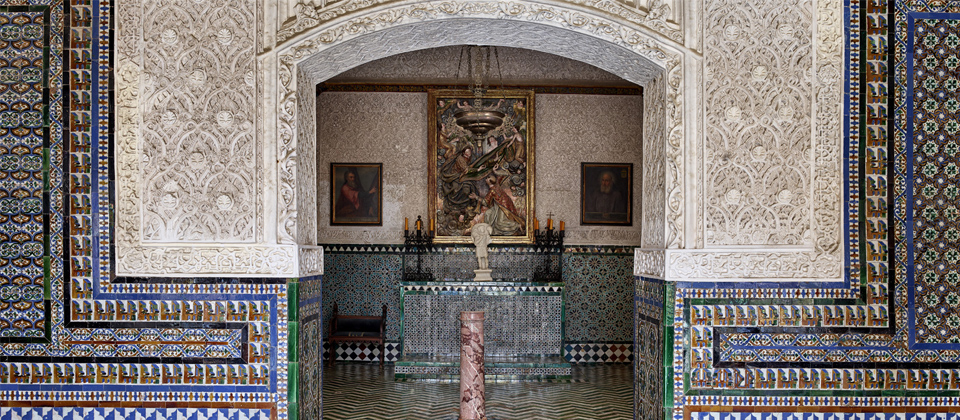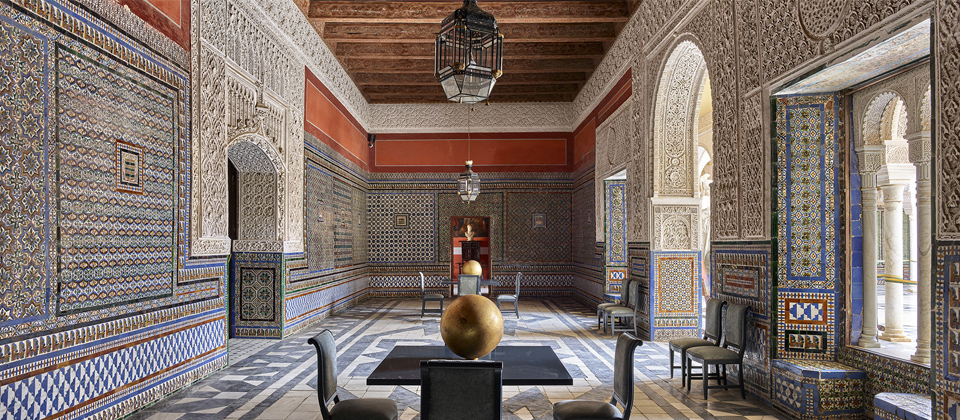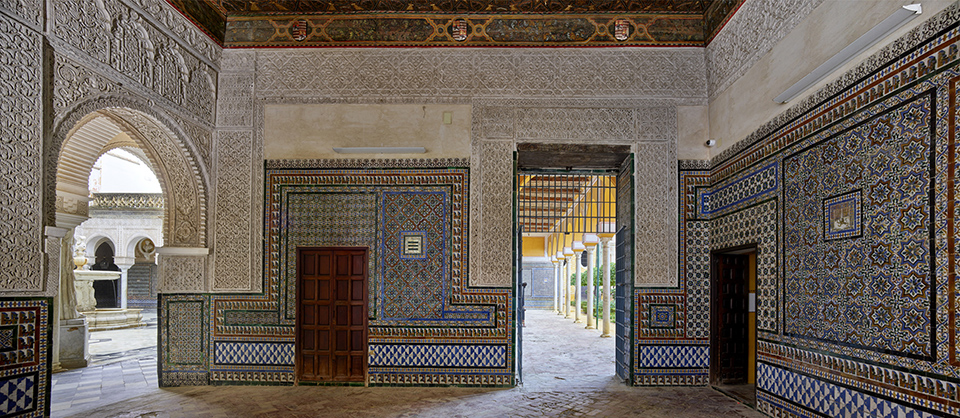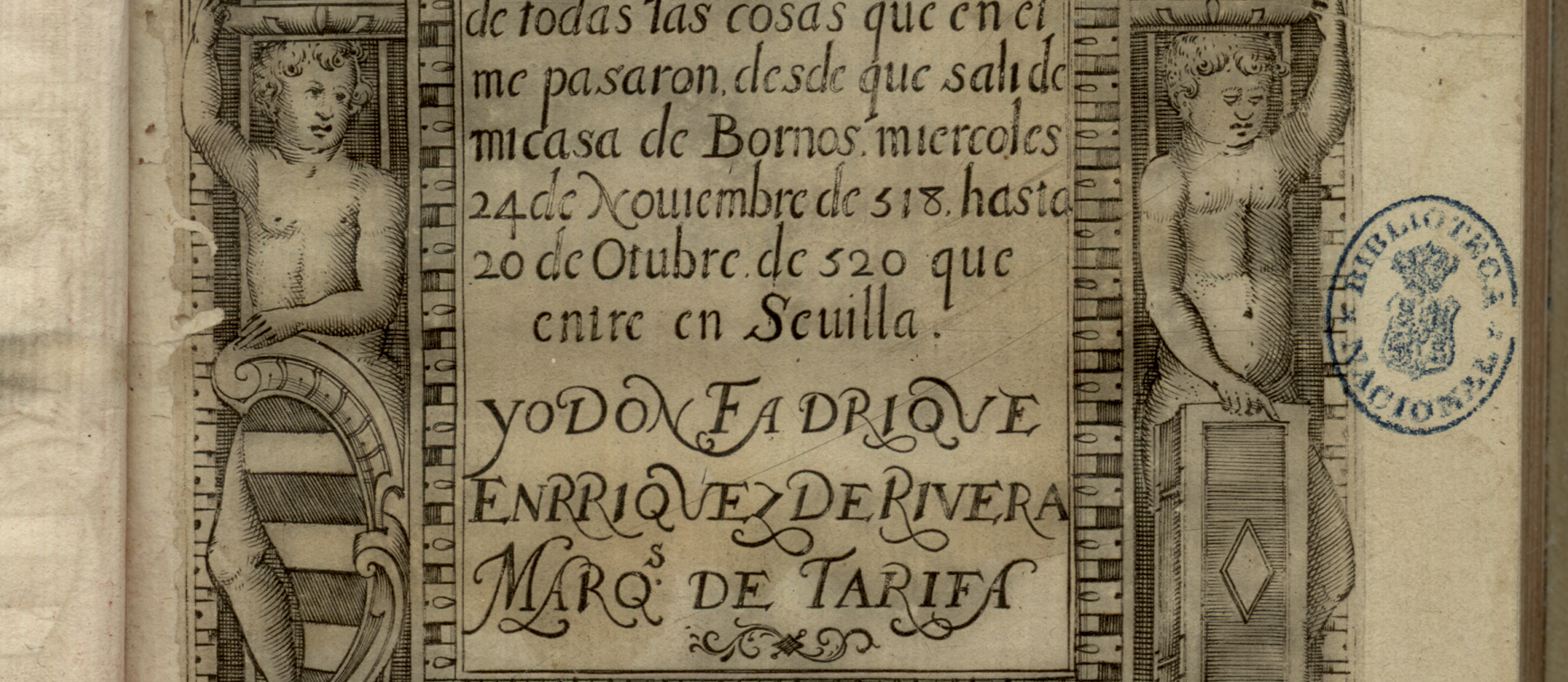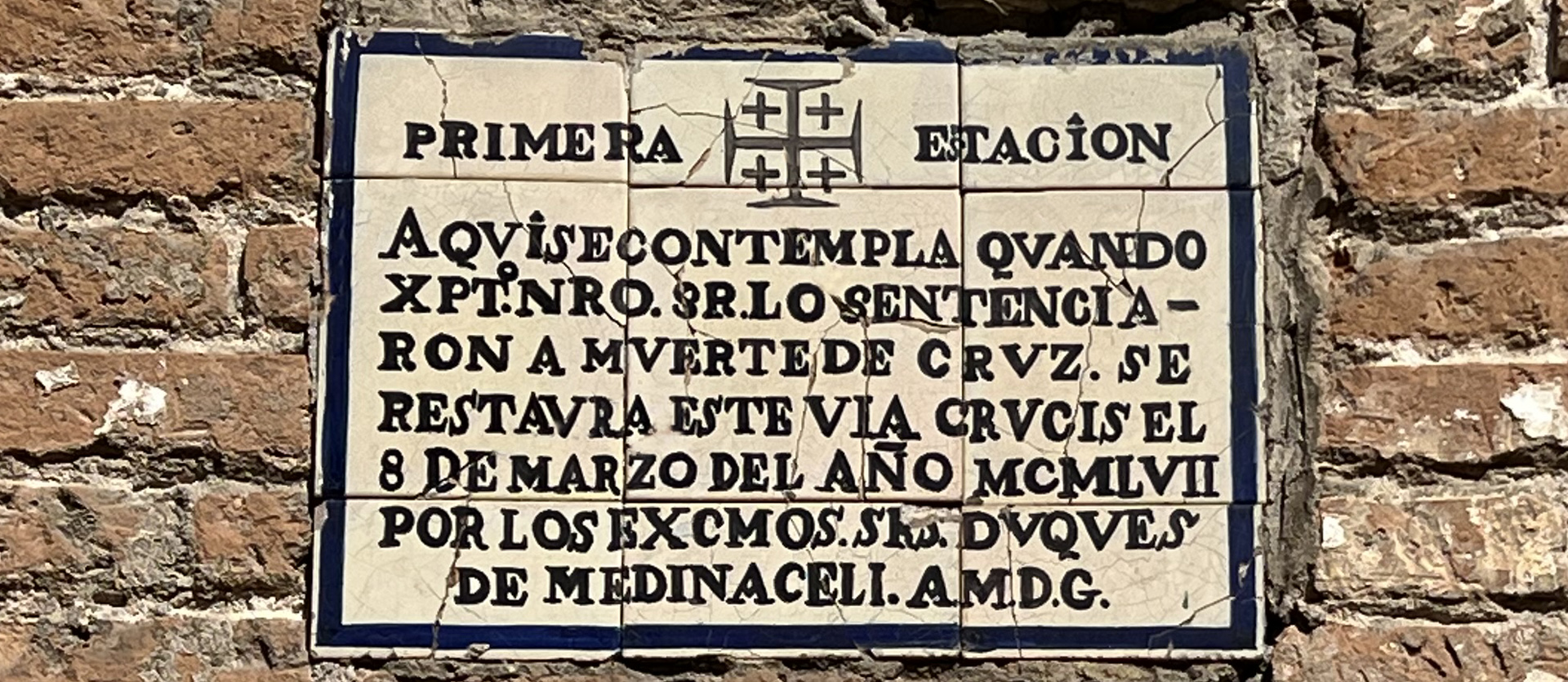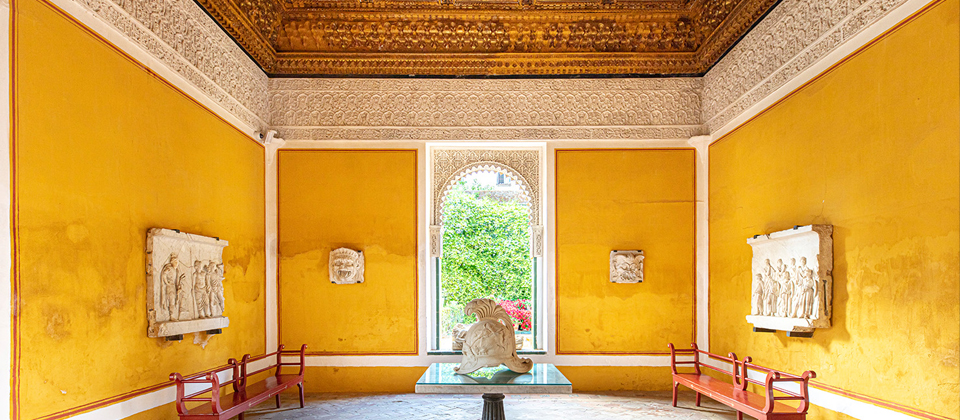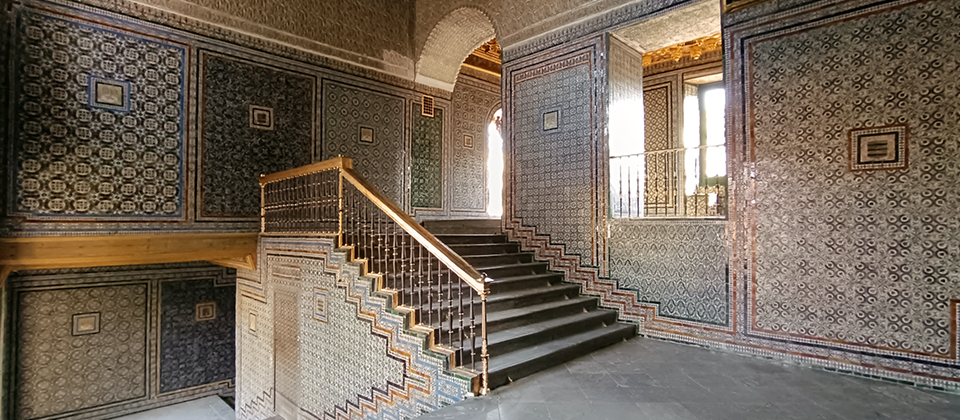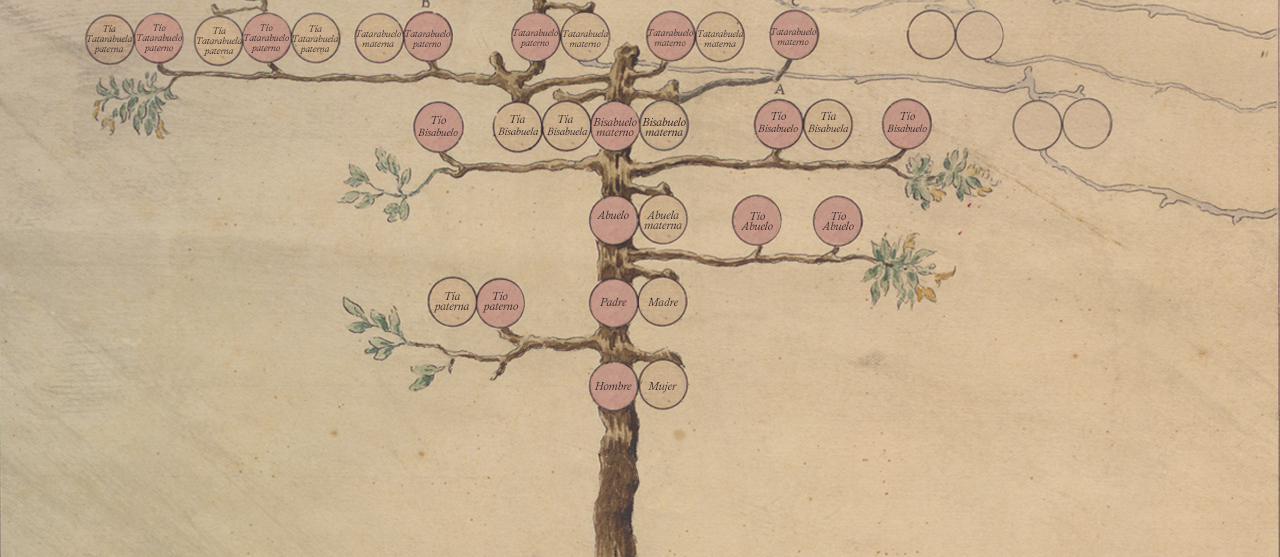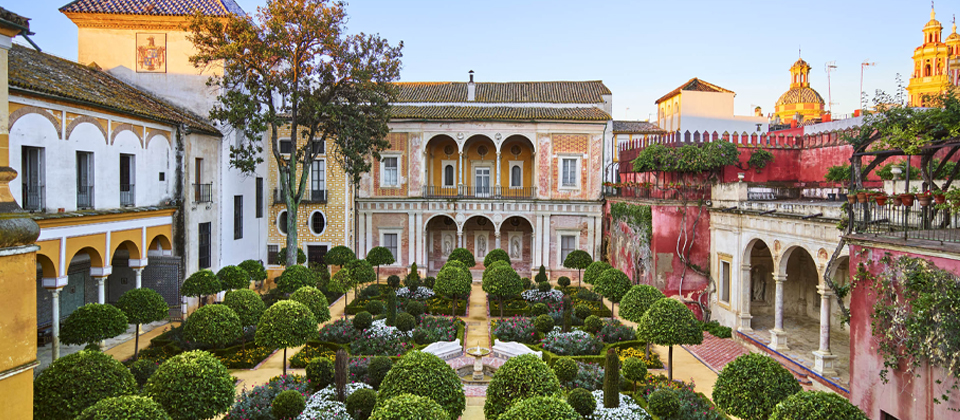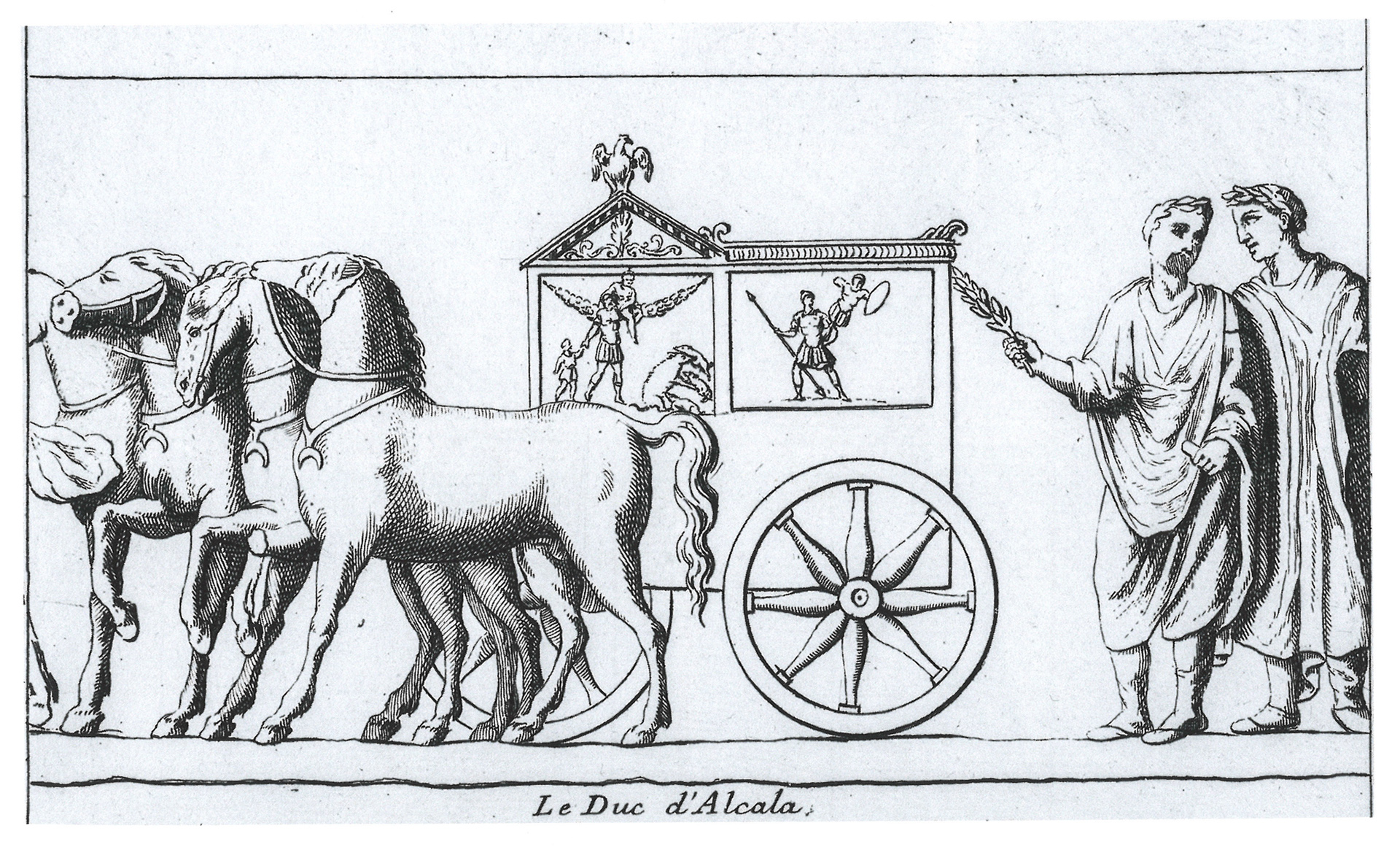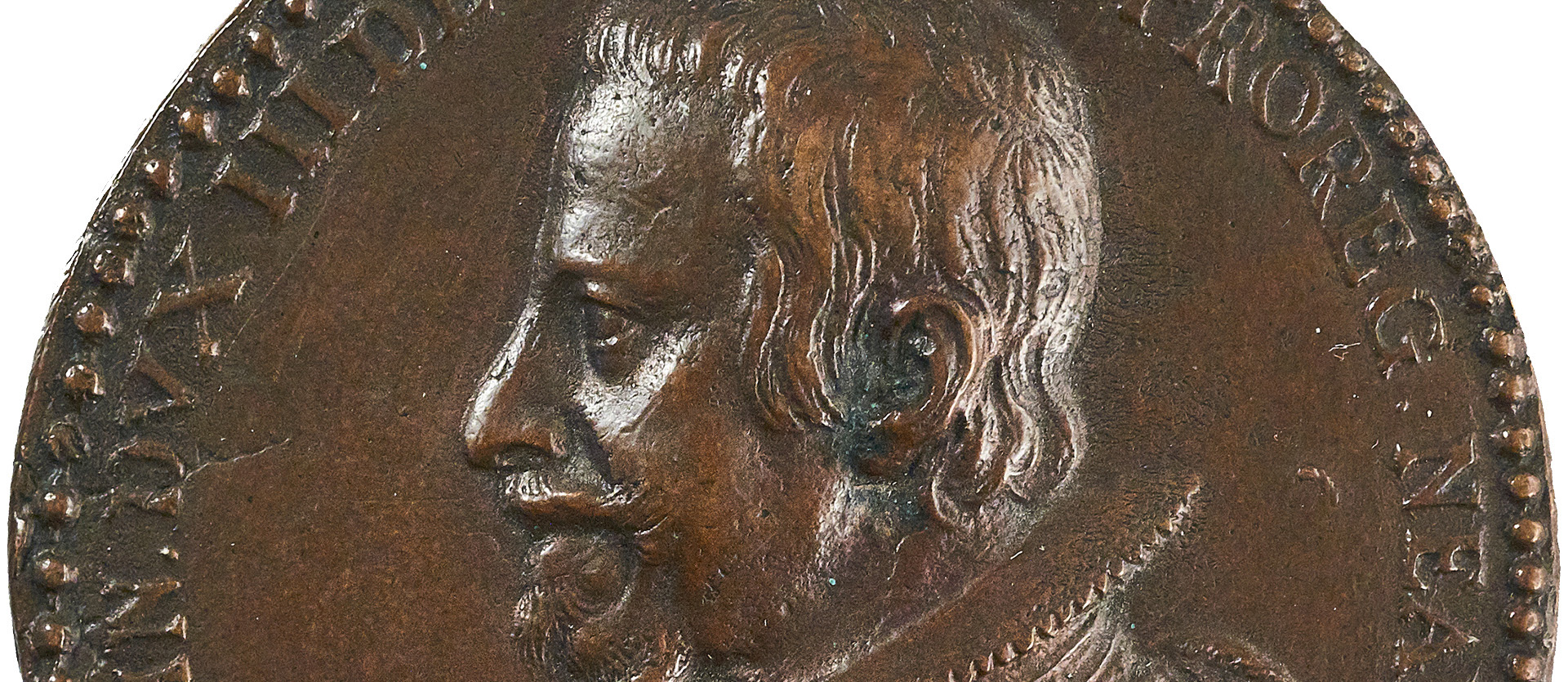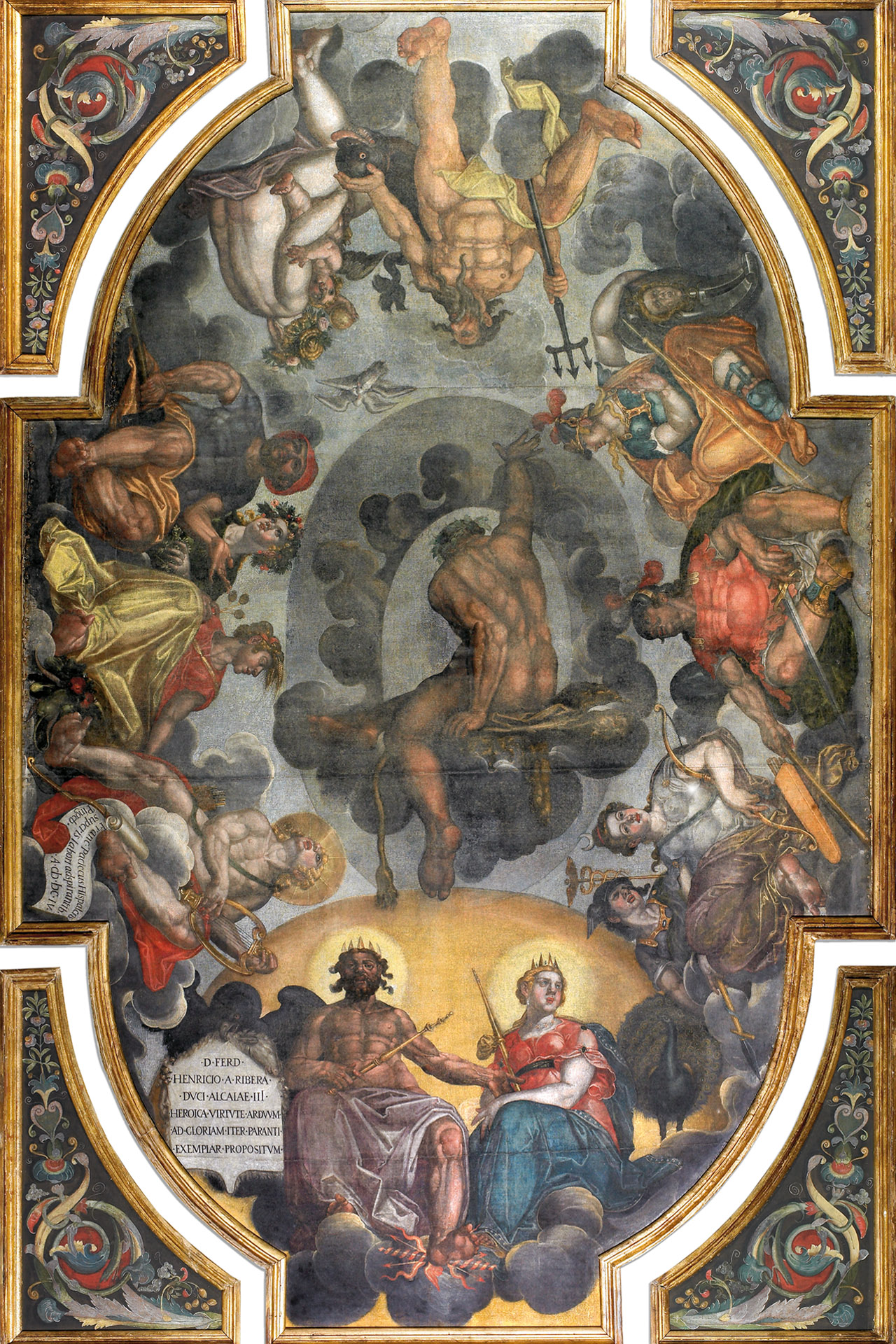Historia de la Casa de Pilatos
Del Mudéjar al Romanticismo
Este palacio es el resultado de un largo proceso de construcción y de adición de nuevas casas y solares en el cual aún hoy se pueden distinguir fácilmente tres grandes fases constructivas: un palacio medieval primitivo construido a fines del siglo XV, una ampliación y reforma renacentista ejecutada en los años veinte y treinta del siglo XVI y, por último, un nuevo palacio levantado hacia 1570 adyacente al antiguo y abrazando su huerta. Sobre este palacio, que ya no crecerá más, se seguirían sucediendo reformas hasta el siglo XX. Puede acceder a cada una de estas etapas pulsando sobre las fechas del eje cronológico que señalan la conclusión de cada una de ellas.
Los orígenes: El palacio mudéjar (1483-1505)
Dibujo que propone una reconstrucción hipotética del palacio primigenio de los Adelantados Mayores, en el que cabría destacar: la recién creada plaza de Pilatos, en la que se levantó, como nuevo acceso al palacio, la actual fachada de ladrillo agramilado con una portada distinta a la genovesa actual; un apeadero más sobrio, carente del actual intercolumnio, espacio ocupado por uno de los salones que abrían al patio y que estaba flanqueado por dos torrecillas; un patio principal porticado en tres de sus lados formando una U que comunicaba con otro pequeño patio, presumiblemente preexistentente, y que sostenía una planta alta que forma una L con el torreón en su centro.
El palacio medieval lo construyeron los Adelantados Mayores de Andalucía, don Pedro Enríquez y doña Catalina de Ribera, sobre un conjunto de casas que habían adquirido a la Hacienda Real, en 1483, de entre los bienes confiscados en Sevilla por el recién creado Tribunal de la Inquisición. La descripción que ofrece el contrato de compraventa no permite identificar este conjunto de casas dentro del perímetro actual, ya que el lindero que indica, “la calle real”, era la forma de denominar a cualquier calle pública, pero sí señala una particularidad singularmente valiosa: la de disponer de una conexión directa con el agua de los caños de Carmona, un monopolio de la Corona que, como concesión graciosa, tenían muy pocas fincas de la ciudad y que permitía tener una huerta ajardinada.
Este núcleo originario fue ampliado por los Adelantados con la adquisición de nuevas casas, no solo con el propósito de aumentar el área de habitación, sino también con el de derribar algunas de ellas para crear una plaza privada, la actual Plaza de Pilatos, en la que erigir la nueva fachada de su palacio con un muro de ladrillo agramilado (V. Lleó, 2017, pp. 24 y ss.).
El palacio medieval se edificó en torno a un patio que entonces tenía forma de U y que puede identificarse por los capiteles cónicos y lisos que coronan las columnas de tres de sus lados. Las obras se extienden entre 1483 y, como máximo 1505, año del fallecimiento de Catalina de Ribera, aunque muy posiblemente ya estuviera concluido en 1496, cuando Catalina adquiere la casa de los Pineda para su segundogénito, hoy palacio de las Dueñas, cuya reforma toma a este como modelo. Sobre estas galerías, se alzaba una planta alta sobre dos de los lados del patio, dejando libre la crujía Sur. La arquitectura y artesonados de todas las estancias que abren a estas galerías del patio, tanto en planta baja como en alta, datan de este periodo, lo que nos da idea de una escala y lujo insólitos para la época que sorprendieron a los viajeros coetaneos y que aún hoy sólo son comparables con el palacio real del Alcázar.
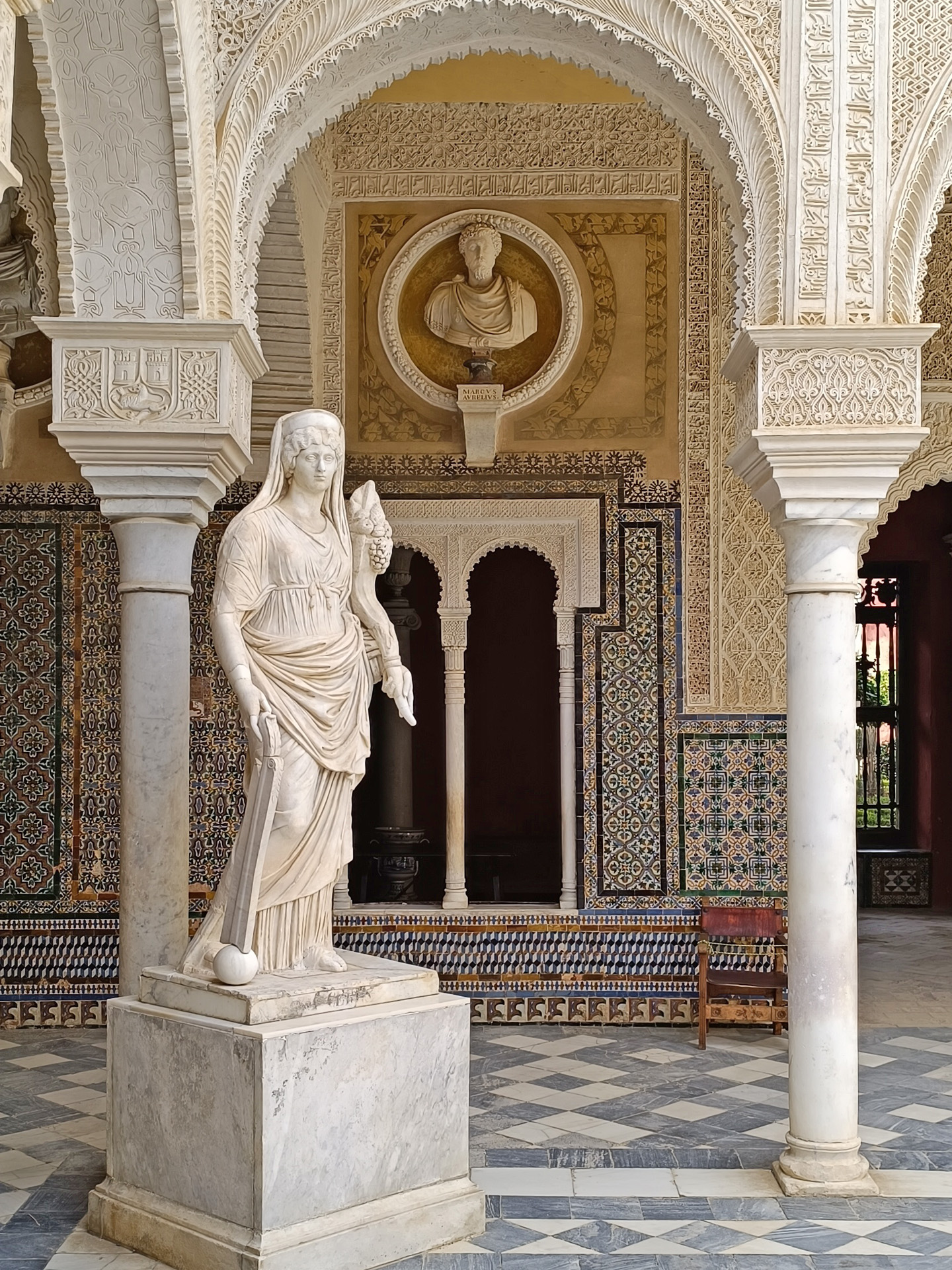
Arco con los capiteles troncocónicos característicos de las galerías del patio del palacio medieval que formaban una U a la que abrían los salones perimetrales.
El palacio primigenio se puede también distinguir por la heráldica presente en los muchos alfarjes que aún perduran y que, en planta baja, contrasta con la que aparece en los paños de azulejo con que cubrió sus muros el I marqués de Tarifa en la década de 1530. En las puertas de la capilla aparecen pintadas a una altura y escala que facilitan su lectura, las armas de Enríquez y Sotomayor, motivo que se repite en los encuentros de sus nervaduras y en los aliceres de los alfarjes de los salones de las plantas alta y baja, excepto en aquellos en los que han sido modificados contemporáneamente, como en el Salón de Descanso de los Jueces, o suprimidos en el siglo XVII, los de la crujía del salón Pacheco. El uso de las armas de Sotomayor en lugar de las de Ribera, obedece a que, hasta 1509, las últimas le correspondían al primogénito de la Casa de Ribera, el ya mencionado Francisco, hijo del primer matrimonio de don Pedro, por lo que el nuevo matrimonio combinó las de los Enríquez con las del linaje materno de la casa de Ribera, las de la madre de su fundador, Inés de Sotomayor, armas que son las que el I marqués de Tarifa ordenó colocar en los sepulcros que encargó para sus padres.
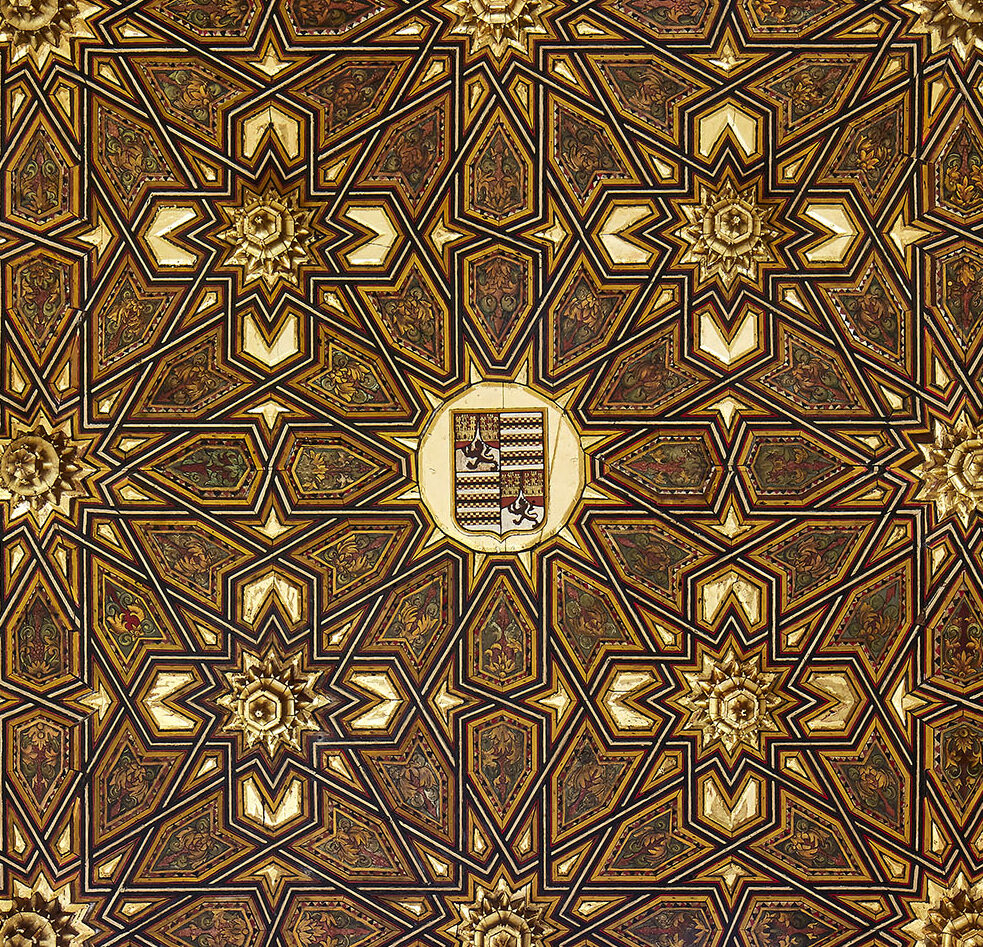
Armas de Enríquez y Sotomayor en el sino de uno de los alfarjes ataujerados de la planta baja. Estas armas, que son las que usaron Pedro Enriquez y Catalina de Ribera, son uno de los elementos que permiten identificar con mayor certeza las estancias de la casa que datan del siglo XV.
Una parte de este palacio del siglo XV, el que lindaba con la calle Imperial fue derribado a principios del siglo XX, dentro de las obras de alineación de dicha calle, derribos que se extendieron, para ampliar el hoy denominado Jardín Chico, a un pequeño patio que conectaba con el principal y que aparece parcialmente dibujado en planos de fines del siglo XIX. La heráldica permite aún distinguir la estructura primitiva de sus espacios de representación, los construidos alrededor del patio, en el que se levantaba un palacio en cada una de sus pandas, expresión que en la época designaba una sala rectangular con cámaras adosadas a sus lados cortos, sintagma que subiste enteramente en la crujía norte, ha desaparecido en la Sur, por el intercolumnio construido por el marqués de Tarifa, y permanece solo parcialmente en la Este, por la escalera que este mismo levanta en la década de 1530.
Contenido relacionado
El palacio del Marqués de Tarifa (1525-1539)
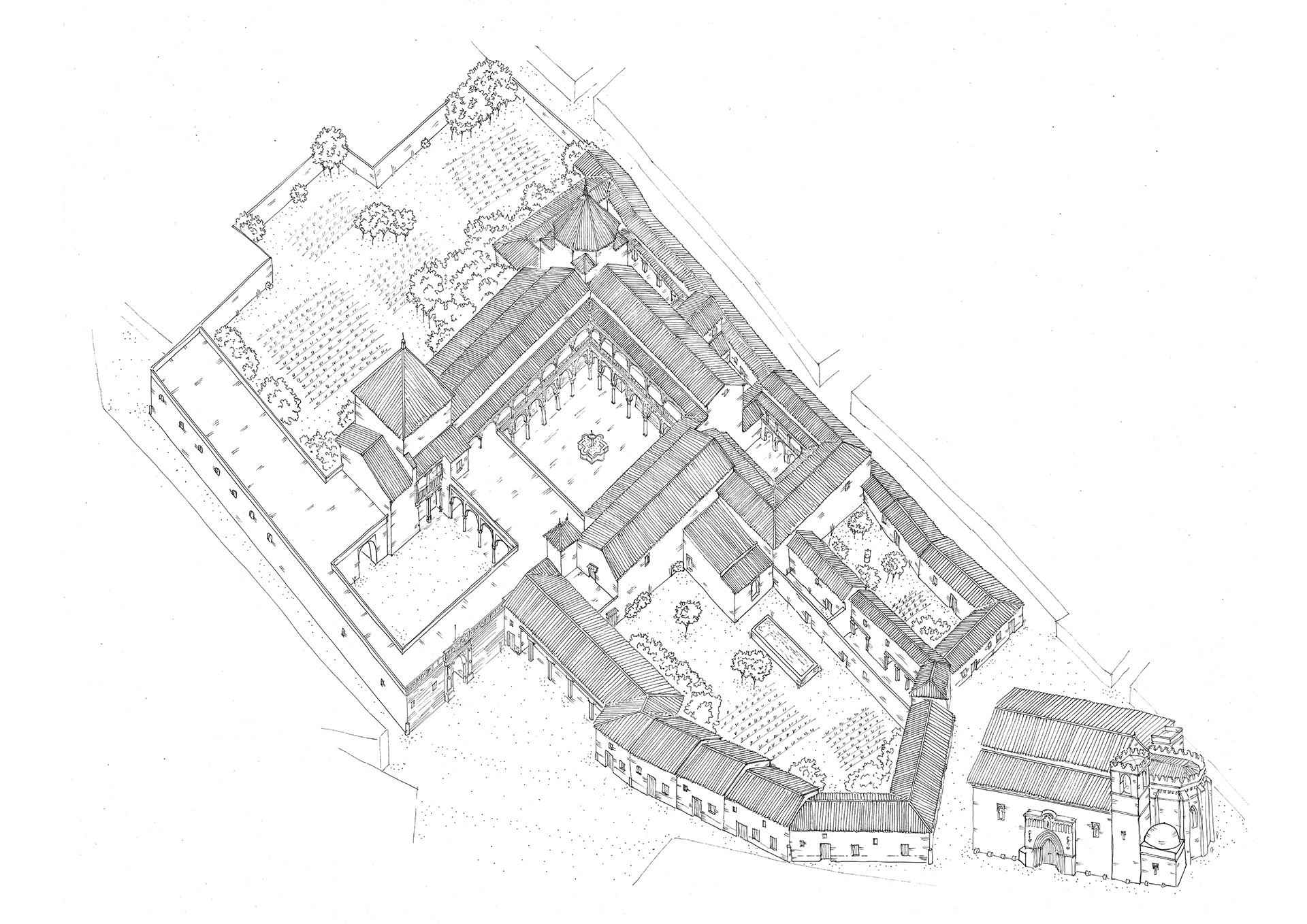
Dibujo que propone una reconstrucción hipotética del palacio con las reformas y adiciones realizadas por el marqués de Tarifa entre su regreso a Sevilla en 1520 y su muerte en 1539. Las más visibles son: las adquisiciones de nuevos solares que alcanzan a ocupar toda la manzana existente entre la iglesia de San Esteban y el convento de San Leandro; el cierre de la panda Este del patio; la edificación de una torre para alojar la escalera; la conversión del salón de la panda del patio adyacente con el apeadero en doble intercolumnio y la edificación de un nuevo «guardarropa» o «cámara de maravillas» en uno de los solares que le permitieron ampliar la huerta, hoy «Jardín Grande».


